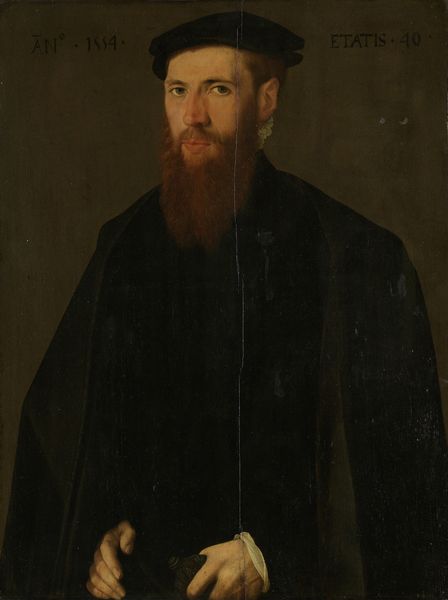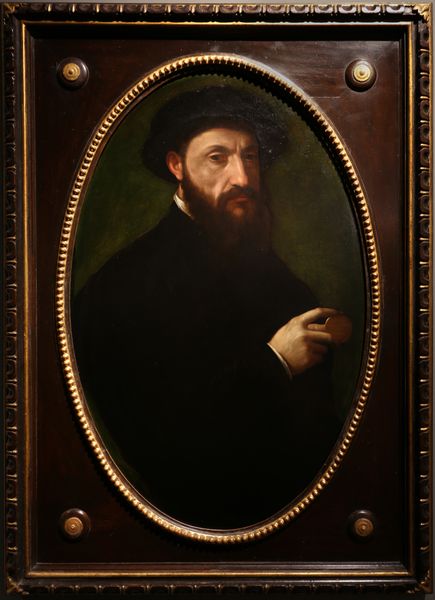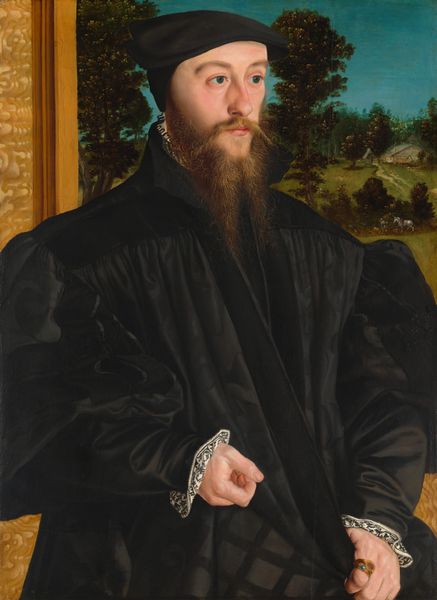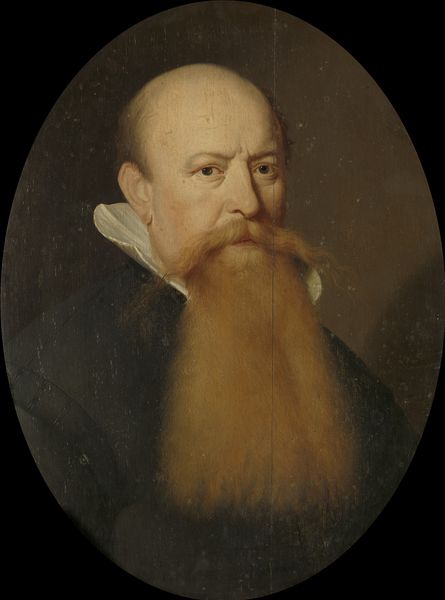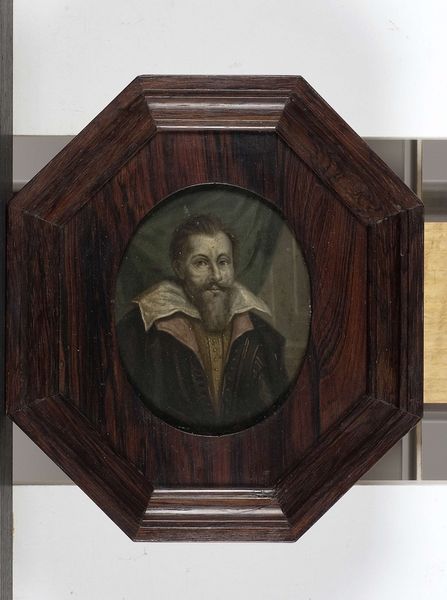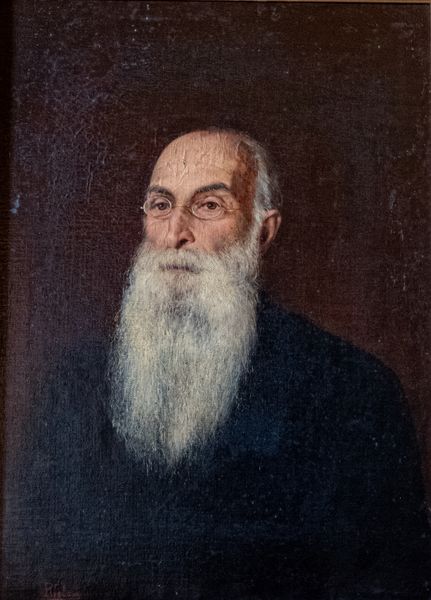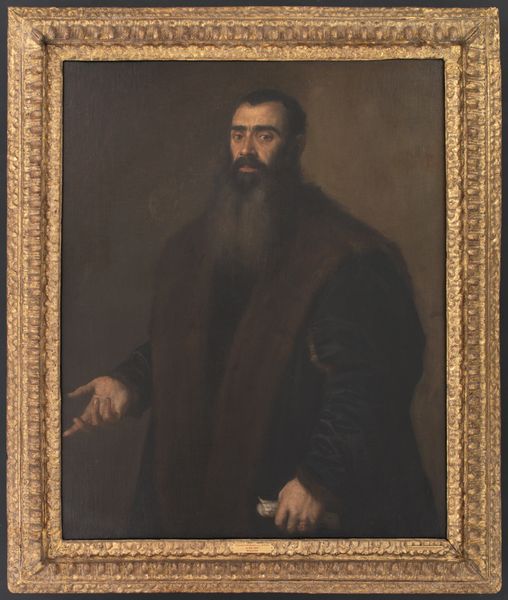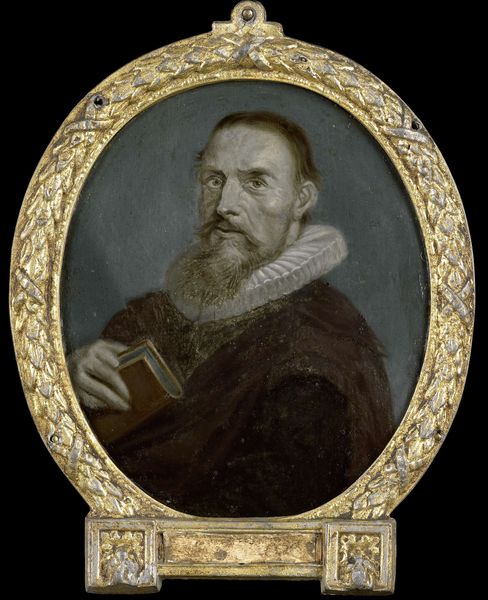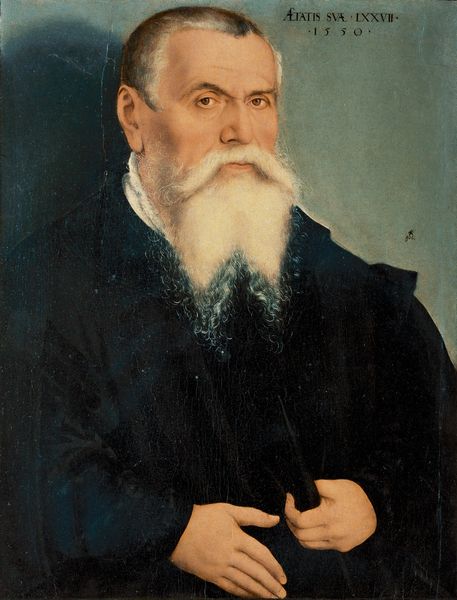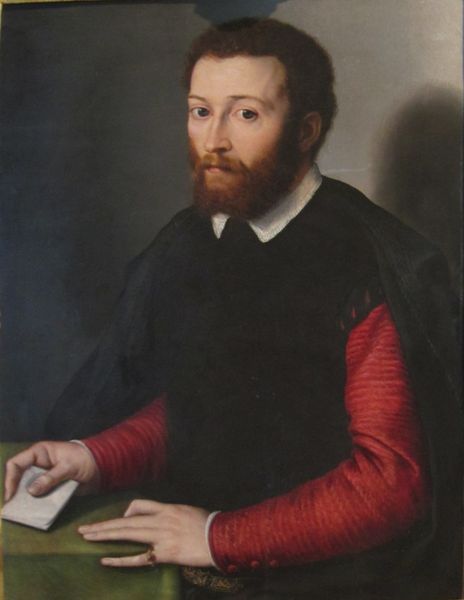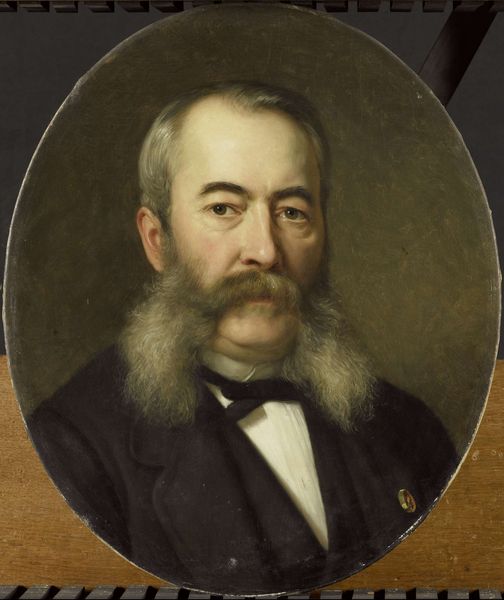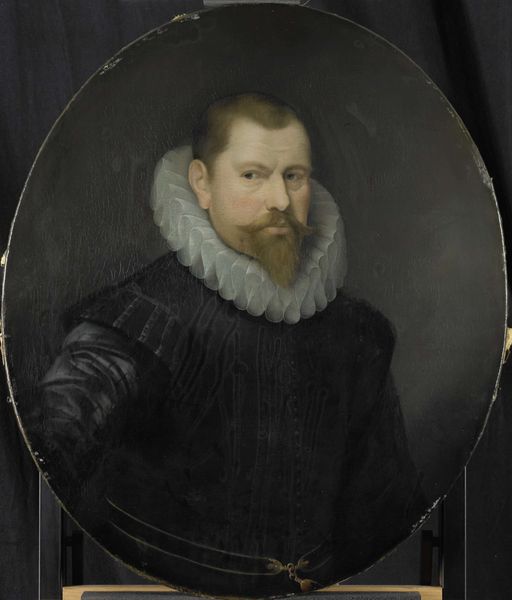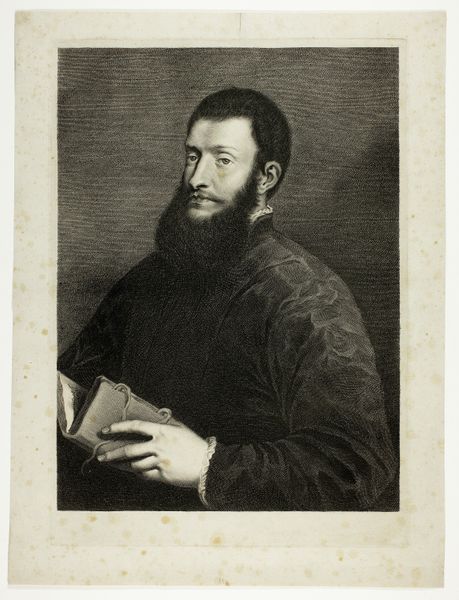
panel, painting, oil-paint
#
portrait
#
panel
#
painting
#
oil-paint
#
sculpture
#
figuration
#
11_renaissance
#
oil painting
#
northern-renaissance
#
academic-art
Dimensions: height 50.3 cm, diameter 48.6 cm
Copyright: Rijks Museum: Open Domain
Cornelis Ketel painted this portrait of Adam Wachendorff in 1574, using oil paint on a wood panel. The smooth surface belies a slow process of layering paint, perhaps with glazes to create subtle gradations of tone in the face and background. The details like the neatly trimmed beard and the crisp lines of the letter in Wachendorff's hand, would have demanded patient work with a fine brush. The circular format is known as a tondo, and was particularly popular in Renaissance portraiture. Consider the social context; this wasn't just a case of picking up materials from an art supply store. Ketel would have had apprentices grinding pigments, preparing the wood panel, and perhaps even assisting in the underpainting. The value was in the artist's skilled hand, which translated raw materials into a polished, persuasive likeness. The overall effect is one of prosperity and order, reflecting the sitter's status and the social values of the time. It serves as a reminder that all works of art are the product of skillful labor.
Comments
rijksmuseum about 2 years ago
⋮
The sitter, Adam Wachendorff, can be identified from the family coat of arms on his watch case. He was the secretary of the London offices of the Hanseatic League, a trading alliance of European cities. The Greek inscription on the original frame (‘Man is a soap bubble’) and the naked youth blowing bubbles on the reverse allude to the transience of human life.
Join the conversation
Join millions of artists and users on Artera today and experience the ultimate creative platform.
